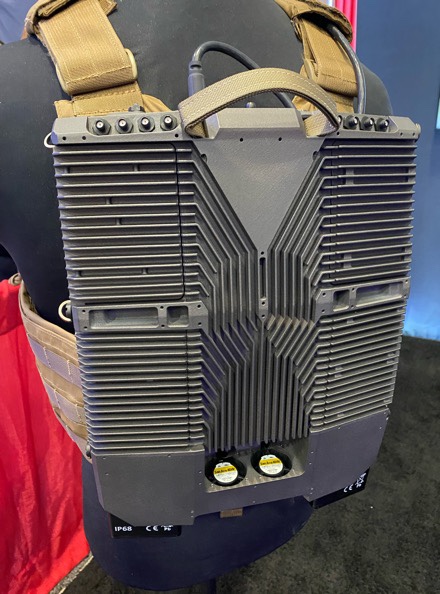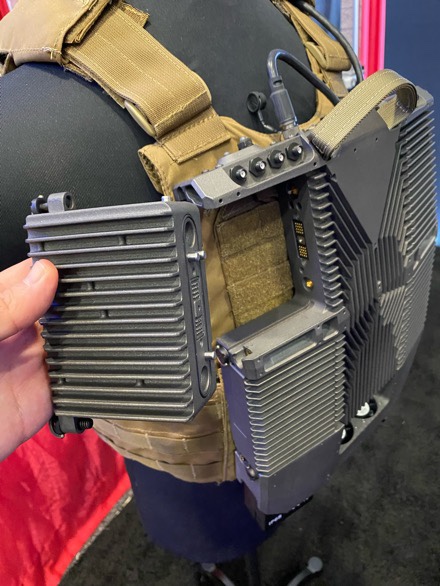The RAID Plate is one of the most exciting Mrs pieces of gear I saw at Modern Day Marine.

Designed and manufactured by Tomahawk Robotics, for the Marine Corps Warfighting Lab (MCWL) it is a body-worn edge processing capability with multiple Artificial Intelligence (AI) systems. Nvidia based CPU/GPU capabilities leverage best in class commercial technology for offline processing.
It combines everything into a single End-User Device, Controller, and control app for all robotic platforms significantly reduces cognitive burden of operating multiple UXVs. For new operators, this also decreases operator training time for Unmanned Systems to approximately 3-5 days.
Built with an open Modular Open System Architecture (MOSA), it is scalable and allows for the plug and play of various modules including up to four tactical radios or other controllers for unmanned systems, EW, and so on.

The system lightens the load by over 25 pounds when compared to the legacy equipment required to offer the same capability. It also consolidates that load into a more streamlined, body worn system with fewer cables and redundant batteries. Worn at rear of the body, RAID Plate also doesn’t compete for prime load carriage real estate. A PALs adapter panel can also be configured over the rear of the RAID Plate. It’s approximately 10″ wide and 13″ tall and just under 2″ thick.
It comes with the modules, required antennas, edge computing capabilities, the Grip universal common controller, Kinesis common control software, as well as Nett Warrior compliant power supply via standard GSA tactical radio batteries. The Kinesis common control software mentioned already works with 11 established UxV and growing and is maintained at no additional cost to the Government.
The Marine Corps is currently evaluating RAID Plate to determine where and how it is used to the greatest effect. If you’ve read Gunner Larose’s recent article on how the Marine Corps is making the Marine Infantry more lethal you can envision right where the RAID Plate capability will fit in.

